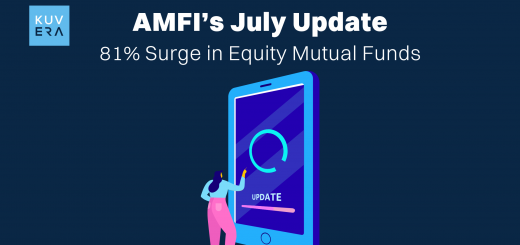So, you have participated in the thrilling process of an Initial Public Offering (IPO). You have carefully analysed the company’s prospects and eagerly awaited the allotment.
Now comes the crucial moment when the shares you hoped for finally make their grand entrance onto the stock exchanges. This much-anticipated event is known as the IPO listing, and the specific time at which trading in these newly issued shares commences is the IPO listing time. For investors, understanding this timeframe is vital for strategizing their next move, whether it involves holding onto the shares for the long term or capitalising on potential listing gains.
Perhaps you are a first-time investor, navigating the intricacies of the primary and secondary markets. Or maybe you are a seasoned market participant, keenly observing the debut of a promising company. In either case, a clear understanding of what dictates the IPO listing time and the processes involved will equip you with valuable knowledge to navigate this pivotal stage.
Here are the details of the IPO listing time, exploring the factors that influence it, the typical schedule you can expect, and the significance of this moment for investors and the company alike. Let us unravel the specifics of when the IPO shares finally become tradable.
Key IPO Listing Timings on BSE and NSE (IST)
Based on typical schedules observed on the Bombay Stock Exchange (BSE) and the National Stock Exchange of India (NSE):
- Pre-Open Session (Order Entry Period): 9:00 AM to 9:45 AM (During this time, you can place, modify, or cancel orders for the newly listed shares.)
- Pre-Open Session (Order Matching & Confirmation): 9:45 AM to 9:55 AM (Order placement, modification, and cancellation cease. The opening price is determined through order matching and confirmation.)
- Buffer Period: 9:55 AM to 10:00 AM (A transition period between the pre-open and regular market.)
- Normal Trading Commences for IPOs (New Listing): 10:00 AM onwards (The stock begins trading normally, following regular market hours of 9:15 AM to 3:30 PM.)
However, these timings represent the general process. The actual IPO listing time for a specific IPO can vary due to various factors and exchange-specific procedures. Always refer to the official announcements from the company, lead managers, and the respective stock exchange websites (BSE and NSE) for the most accurate and up-to-date listing schedule.
Defining IPO Listing Time
The IPO listing time refers to the specific hour and minute on the designated listing day when the shares of a company, offered to the public for the first time through an IPO, become available for trading on the stock exchanges (primarily the National Stock Exchange of India – NSE, and the Bombay Stock Exchange – BSE). This marks the transition of the company from being privately held to being publicly traded.
Before this moment, the shares allotted to successful IPO applicants exist in their Demat accounts but cannot be bought or sold on the open market. The listing time essentially activates these shares for trading, allowing investors who participated in the IPO, as well as new investors, to buy and sell them through their trading accounts. The precise IPO listing time is a closely watched detail, as it often sets the stage for the stock’s initial price movement and trading volume.
Factors Influencing the Listing Time
The determination of the exact IPO listing time is not arbitrary. Several factors come into play, involving coordination between the company, the lead managers (investment banks managing the IPO), and the stock exchanges.
These factors aim to ensure a smooth and orderly commencement of trading:
- Regulatory Procedures
- Coordination with Stock Exchanges
- Finalisation of Allotment
- Reconciliation and Credit of Shares
- Market Conditions
- Lead Managers’ Strategy
- Exchange’s Operational Readiness
What to Expect on Listing Day
While the exact IPO listing time can vary depending on the specific IPO and the factors mentioned above, the schedule outlined in the “Key IPO Listing Timings” section provides a general understanding of the events on the listing day. Always prioritise official announcements for the specific IPO you are tracking.
Why IPO Listing Time Matters
The IPO listing time is a highly significant moment for several reasons. These are as follows:
-
For Investors
- First Opportunity to Trade
- Price Discovery
- Decision Point
-
For the Company
- Access to Capital
- Public Visibility
- Shareholder Base Expansion
- Market Valuation
How to Track the IPO Listing Time
For investors eagerly awaiting the listing of an IPO, staying informed about the exact timing is crucial.
Here are some main sources to track the IPO listing time:
- Official Prospectus (RHP)
- Stock Exchange Websites (NSE and BSE)
- Lead Managers’ Websites
- Financial News Websites and Portals
- Brokerage Platforms
- SEBI Filings
Navigating the Initial Trading Session
The trading session immediately following the IPO listing time can be quite volatile. Here are some aspects investors should be prepared for:
- Price Volatility
- High Trading Volumes
- Circuit Breakers
- Impact of Market Sentiment
Wrapping Up
The IPO listing time is a pivotal moment in the journey of a company going public and a crucial point for investors who participated in the offering. Understanding the factors that influence this timing, knowing where to find accurate information, and being prepared for potential volatility in the initial trading session are essential for navigating this stage effectively. Whether you intend to hold your allotted shares for the long haul, believing in the company’s future growth, or aim to capitalise on short-term listing gains, being well-informed about the IPO listing time empowers you to make strategic decisions and participate confidently in the market debut of a new entrant. So, keep a keen eye on the official announcements, understand the process, and be ready for the moment when the IPO shares finally unlock their trading potential.
Interested in how we think about the markets?
Read more: Zen And The Art Of Investing
Watch here: Learn about the F&O craze in India












